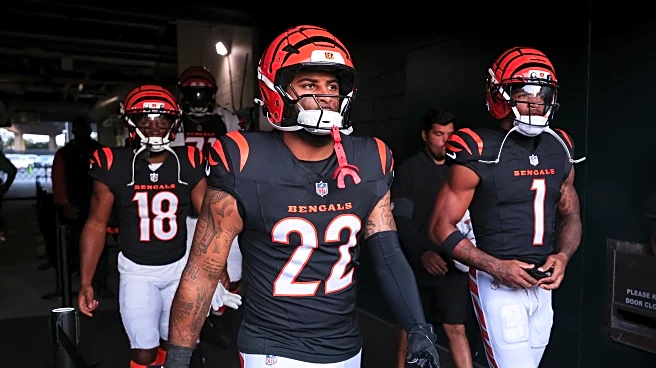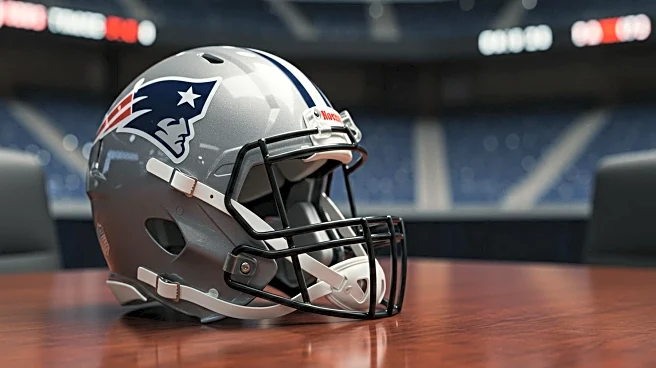What's Happening?
The Cincinnati Bengals are reportedly open to trade offers for their star defensive end, Trey Hendrickson, as he continues a hold-in during training camp. Hendrickson has been in a contract dispute with the Bengals throughout the offseason, leading to his absence from mandatory minicamp and the initial days of training camp. Despite returning to the team on July 30, Hendrickson has not participated in practice sessions. He is entering the final year of his contract, valued at $16 million, and has expressed dissatisfaction with the team's handling of his contract situation. Hendrickson has been a key player for the Bengals, earning Pro Bowl selections in each of his four seasons with the team and recording impressive sack numbers, including a league-high 17.5 sacks last season.
Why It's Important?
The potential trade of Trey Hendrickson could significantly impact the Bengals' defensive capabilities, as he has been a crucial part of their pass rush. His departure would necessitate adjustments in their defensive strategy and personnel. Additionally, Hendrickson's contract situation highlights the growing financial demands of top edge rushers in the NFL, with recent contracts for players like T.J. Watt setting high benchmarks. The outcome of Hendrickson's situation could influence contract negotiations for other players in similar positions, affecting team budgets and player market values across the league.
What's Next?
If the Bengals decide to trade Hendrickson, they will need to find a suitable replacement to maintain their defensive strength. Other teams interested in acquiring Hendrickson will likely evaluate his performance and contract demands carefully. The resolution of Hendrickson's contract dispute could set a precedent for future negotiations involving high-performing defensive players. Stakeholders, including team management and fans, will be closely monitoring developments to understand the implications for the Bengals' upcoming season.
Beyond the Headlines
Hendrickson's situation underscores the broader issue of player contract negotiations in the NFL, where the balance between team budgets and player compensation is increasingly complex. The case also raises questions about player loyalty and team management strategies, as players seek to maximize their earnings while teams aim to maintain competitive rosters within salary cap constraints.












